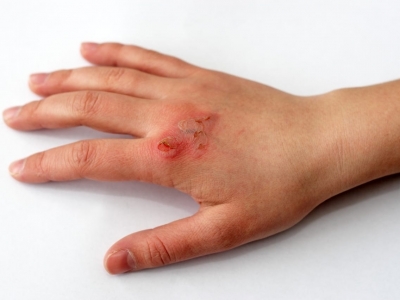
Burns are common personal injuries that can range considerably in severity. Burns are categorized into three degrees based on this severity, with third-degree burns being the most serious distinction that causes the greatest harm. First-degree burns only affect the outermost part of the skin, second-degree burns affect both the outer and lower layer of the skin and typically result in swelling and blistering, and third-degree burns go through the lower layer of skin and affect deeper tissue, often damaging nerves and leaving the skin white or blackened. Understanding the type of burn that occurred can help you determine the type of first aid to apply and the immediacy of help needed.
Don’t put butter on the burn to soothe the pain. An old home remedy for burns involves slathering the burn with butter to reduce pain, but butter and other greasy substances cause the burn to retain more heat, which can increase the severity of the burn. Alternatively, run the burn under cold water for a safe soothing effect.
Don’t burst any blisters. Bursting blisters increases your risk for infection, which is already elevated with the contraction of a burn. Signs of infection include pus emerging from the burn, extension or growth of the burn, discoloration of the burn, and fever.
Picture Credit : Google




